|
In This Issue...
- President's Letter
- Support for Researchers and Students in Puerto Rico
- Hobby Much?
- A Glimpse in the Neurobehavioral Mechanisms of ADHD
- Trending Science
- Subscribe to the Behavioral Neuroscience Daily
- Registration Discounts Offered for the 2018 Annual Meeting
- Other Meetings
Join us for the IBNS 27th Annual Meeting in beautiful Boca Raton, Florida, USA at the Boca Raton Resort from June 27-July 2, 2018! As the meeting quickly approaches, we want you to keep in mind that Abstract submissions (poster/oral) are due February 26, 2018. For more information, please visit IBNS 2018 Annual Meeting and feel free to contact the IBNS Central Office with any questions.
Congratulations to the 2018 Travel Award Winners!
On behalf of the society, I would like to extend our collective congratulations to the 2018 IBNS travel award winners:
Postdoctoral Awardees: Fernando Caravaggio, Jessica Deslauriers, Maria Diehl, Patricia de la Tremblaye, Anand Gururajan, and Joshua Haight
Graduate Awardees: Chelsea Brown, Hector Bravo-Rivera, Courtney Aryn Brye, Caitlin Burgdorf, Nicholas Everett, Niveen Fulcher, Caesar Miguel Hernandez, Sofiya Hupalo, Rukhshona Kayumova, Brittany Nicole Kuhn, Jennifer Martin, Lina Fernanda Gonzalez-Martinez, Solianne Martinez-Jimenez, Laura Mendez, Kelly Moench, Shin Park, Jacqueline Quigley, Melissa Rivera-Lopez, Luan Tonelli, Margarida Trigo, and Katie Yoest
Undergraduate Awardees: Dmitry Kovalev and Ben Tsang
Once again this year, the Education and Training Committee, chaired by Stacey Rizzo, had the extremely difficult task of choosing the travel award winners from an exceptional candidate pool of over 70 applicants. These exceptional young scientists are the future of our society and of behavioral neuroscience. One has only to look back at past award winners to see the bright futures that await these talented young scientists. As a society, we are proud to have them represent us.
I will also take this opportunity to remind everyone that you can help out our next generation of  IBNS scientists. Although we have already given travel awards this year, you can help ensure that the longstanding commitment of IBNS to support young scientists will continue. I encourage you each to donate what you can, please consider doing so as you submit your own abstracts and register for the conference. IBNS scientists. Although we have already given travel awards this year, you can help ensure that the longstanding commitment of IBNS to support young scientists will continue. I encourage you each to donate what you can, please consider doing so as you submit your own abstracts and register for the conference.
Finally, we once again wish to acknowledge the support of our corporate sponsors, Plexon and ThorLabs, who made substantial contributions allowing five additional deserving students from Puerto Rico to attend the IBNS meeting.
Once again, congratulations to all of our award winners, and I will look forward to seeing you all in Boca Raton.
Thank you for your continued support of our society and best wishes,

F. Scott Hall, PhD
IBNS President
Support for Researchers and Students in Puerto Rico
by Monica I. Feliu-Mojer, PhD, Director of Communications & Science Outreach
Ciencia Puerto Rico | Promoting Science and Research in Puerto Rico
Based at the University of California, San Francisco
There will be plenty of opportunities surrounding the IBNS meeting for doing outreach in Puerto Rico. There is a robust neuroscience community in Puerto Rico and many members are very engaged in outreach and education.
There are many ways to get involved in supporting science in Puerto Rico right now. An easy one would be to reach out to colleagues who are there and ask about reagents or supplies that could be sent to replace things that were lost due to the hurricanes. CienciaPR has compiled some relevant information here.

In addition to that, early in 2018, CienciaPR will launch a pilot project to train educators to implement four science lessons in disaster-related topics: renewable energy, environmental sustainability, clean and potable water, and terrestrial ecosystems. Later in the year, we are bringing together scientists and educators to co-create project-based science lessons that foster creativity, entrepreneurship, and critical thinking skills. We will train the
scientists in communication and teaching, and the teachers in research skills and how to use culturally relevant strategies to make science more relevant to students. These new lessons will serve as a platform for students to work together to address the challenges they see in their communities. Our long-term goal is to have validated approaches that can be scaled and widely implemented across Puerto Rican schools. People who are interested in supporting our pilot project and education projects can make their gifts here.
Hobby Much?
Some Workout Partners Have Four Legs: Combining Behavior and Physical Training in a Horseback Riding Hobby
by Kelsy Ervin, MSc, PhD Candidate
University of Guelph, Guelph, ON, Canada
I have gained a richer practical understanding of animal behavior and learning theory from my experiences working with horses than from my university studies. Horseback riding and training involves an intricate balance of reinforcement, an understanding of the animal’s behavior, and physical fitness. Horses have been a passion of mine since I was a young girl. I seized any opportunity I could to ride or just be around horses; I took lessons, attended riding summer camps, volunteered to groom horses and clean stalls, and even volunteered and worked part-time for a therapeutic riding center as a teenager.
Luckily for me, I chose to do my undergraduate, and now graduate studies, in the heart of 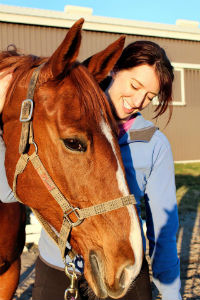 Ontario horse country, at the University of Guelph, where I am currently working on my PhD. Almost on a whim, I signed up for dressage lessons through the university’s Equestrian Club, through which I met my fantastic current coach and developed a love for the sport of dressage, and eventually competing as part of the university’s intercollegiate team. Ontario horse country, at the University of Guelph, where I am currently working on my PhD. Almost on a whim, I signed up for dressage lessons through the university’s Equestrian Club, through which I met my fantastic current coach and developed a love for the sport of dressage, and eventually competing as part of the university’s intercollegiate team.
Dressage is probably one of the most difficult equestrian disciplines to define. From the French, it literally means “training,” and in the simplest terms, it is a way of building a connection between rider and horse in order to perform technical movements that are (disappointingly) far more difficult than they appear. What I really love about dressage is this technical approach. Having a rider on its back unsurprisingly disrupts the natural balance of a horse, so a major aim of dressage is to rebalance the horse and encourage it to take more weight onto its hind end and build muscle through its back, allowing it to use its body more efficiently. All of this takes months or years of careful and patient exercise and training.
More than anything, dressage emphasizes building a trusting relationship with the horse. I currently ride a 10-year-old Canadian Sport Horse named Legacy; I’ve been riding her for the past four years and I have really enjoyed developing this working relationship with her. I consider Legacy my team-mate, and our progress together has truly been a team effort. Last year, Legacy and I competed in our first show and we are looking forward to a full season this summer.
Horseback riding keeps me active and fit, which I’ve found especially important in my graduate studies when exercise often falls victim to demanding experimental schedules. Riding is not only great exercise, but also provides a much needed mental break. While I am at the barn, I am totally present and because I am working with 1300-pound animals, I cannot be thinking or worrying about anything else. I leave mentally refreshed, having had a great workout, and always having learned something new.
Looking for a new employment opportunity or struggling to find the right candidate? Meet the IBNS Career Center!
One of the biggest challenges for any international scientific society is to provide quality and informative support to its members, whether it is for a new employment opportunity or for finding the right candidate for a new position you opened. The IBNS excels in this area through its online Career Center portal (http://jobs.ibnsconnect.org) through which it provides the right tools for both, job seekers and employers.

The IBNS Career Center portal offers all the standard operational features, such as a thorough search engine by keyword and location, as well as extra services such as a free review of your resume for feedback and a job-posting service for employers. However, what makes the IBNS Career Center stand out in terms of support, is two additional quality features: resources for job seekers & access to a resume bank for employers.
In the Resources section you can have access to a number of articles with valuable tips in resume building, job seeking and communication, from experienced scientists in the field, not only for searching or applying for a position, but also for the interview process. There is also plenty of advice and tips for building your ‘brand’ and your social media presence, which will help you strengthen your image and moving your career to the direction you want.
 In the Resume Bank, potential employers have free access to a large bank of resumes and profiles, which you can customize by introducing filters that apply to your search and create lists of candidates that fulfill your own criteria. In the Resume Bank, potential employers have free access to a large bank of resumes and profiles, which you can customize by introducing filters that apply to your search and create lists of candidates that fulfill your own criteria.
A Glimpse in the Neurobehavioral Mechanisms of ADHD
by Sue Andersen, PhD
Associate Professor of Psychiatry
McLean Hospital/Harvard Medical School
Attention deficit hyperactivity disorder (ADHD) may be diagnosed as one of three subtypes: primarily inattentive (ADHD-I), primarily hyperactive/impulsive (ADHD), or the combined subtype (ADHD-C). Researchers have shown that ADHD is associated with a delay in cortical development and increased activity in the striatum. ADHD shows a sex bias (effects boys more than girls) and is highly heritable. Both genes and treatment involve the dopamine, norepinephrine, and serotonin systems. The disorder is commonly treated with psychostimulants including methylphenidate (Ritalin) and amphetamine derivatives (Adderall) that are either short or long lasting. Non-stimulant treatments, guanfacine (Intuniv) or atomoxetine (Strattera), are also available as non-addictive alternatives.
Our group has examined the enduring effects of exposure to methylphenidate during the juvenile period. We found that early, but not late, exposure to methylphenidate reduces the risk for  substance abuse in adolescence. In addition, persistent increases in striatal blood flow are observed in treated, normal animals and in humans with ADHD when acutely challenged with methylphenidate. Results from my lab have importantly corroborated clinical findings, and importantly, support a biological basis for the enduring medication effects in ADHD. Future work from the laboratory will build on sex differences that we observed in a dopamine depletion model of ADHD. Behaviorally, male rats were more impulsive than females. Methylphenidate treatment reduced impulsivity in both intact and ovariectomized depleted, but not sham, females. Mechanistically, the majority of methylphenidate effects are mediated by the D2-receptor family, Adra2a, and 5-HT1a receptors. We will utilize this model and focus on identifying underling mechanisms to develop novel treatment approaches. substance abuse in adolescence. In addition, persistent increases in striatal blood flow are observed in treated, normal animals and in humans with ADHD when acutely challenged with methylphenidate. Results from my lab have importantly corroborated clinical findings, and importantly, support a biological basis for the enduring medication effects in ADHD. Future work from the laboratory will build on sex differences that we observed in a dopamine depletion model of ADHD. Behaviorally, male rats were more impulsive than females. Methylphenidate treatment reduced impulsivity in both intact and ovariectomized depleted, but not sham, females. Mechanistically, the majority of methylphenidate effects are mediated by the D2-receptor family, Adra2a, and 5-HT1a receptors. We will utilize this model and focus on identifying underling mechanisms to develop novel treatment approaches.
Trending Science
In this column, we share the latest research, interesting scientific articles and news.
Newly Found 'Anxiety Cells' in the Ventral Hippocampus of Mice
by Patricia B. de la Tremblaye, Guest Editor
University of Pittsburgh, Pittsburgh, PA, USA
The 2014 Nobel Prize winners in Physiology or Medicine are Drs. Edvard and May-Britt Moser, from the Norwegian University of Trondheim for identifying cells constituting the “positioning system in the brain”, mainly involving “grid cells” located in the entorhinal cortex, and Dr. John O'Keefe of the University College of London for discovering “place cells” in the hippocampus (Abbott & Callaway, 2014). In a similar line of research, a recent collaborative study led by Dr. René Hen at Columbia University and Dr. Mazen Kheirbek at UC San Francisco, resulted in discovering a subpopulation of hippocampal cells, which they coined as “anxiety cells (Jimenez et al., 2018). These anxiety cells are located largely in the ventral hippocampus, and become active while forming representations of emotionally salient environments, in contrast to place cells, located predominately in the dorsal hippocampus, which, in lieu, become active during encoding and retrieving spatial representations of the environment (Lee, Yoganarasimha, Rao, & Knierim, 2004; O'Keefe & Dostrovsky, 1971).
Using freely moving calcium imaging, and silencing or stimulation optogenetics in mice, the researchers found that, in response to the anxiogenic environments, activated cells in ventral hippocampus project to lateral hypothalamic area and directly impact avoidance behavior after entry into the anxiogenic open-arms of the elevated plus maze and in the center zone of the open field test. Furthermore, these ventral-hippocampal CA1 projection neurons to the lateral hypothalamus do not overlap with those projecting to the basal amygdala, which are, instead, active during contextual fear conditioning. This indicates that these projection-pathways are separate and differentially contribute to emotional behavior. In addition, CA1 anxiety cells show minimal response to spatial stimuli as opposed to place cells in the dorsal hippocampal CA1. Further, investigation from these laboratories of pathway-specific control of different emotionally valent behaviors, will focus on the contribution of other sub-regions of the hippocampal formation, as well as the limbic system; including other specific hypothalamic and amygdalar nuclei and cell-types.
By mapping these circuits, a more refine targeting of brain regions may lead to more personalized-based therapies for treatment of mood disorders and psychiatric illness. A press release about the paper was published on the Columbia University Medical Center’s Newsroom website, and a summary of the paper and it’s implication can be found in the January 31st issue of NeuroscienceNews.com.
References:
Abbott, A., & Callaway, E. (2014). Prize for place cells. Nature, 514(7521), 153. doi: 10.1038/514153a
Jimenez, J. C., Su, K., Goldberg, A. R., Luna, V. M., Biane, J. S., Ordek, G., . . . Kheirbek, M. A. (2018).
Anxiety Cells in a Hippocampal-Hypothalamic Circuit. Neuron, 97(3), 670-683 e676. doi: 10.1016/j.neuron.2018.01.016
Lee, I., Yoganarasimha, D., Rao, G., & Knierim, J. J. (2004). Comparison of population coherence of place
cells in hippocampal subfields CA1 and CA3. Nature, 430(6998), 456-459. doi: 10.1038/nature02739
O'Keefe, J., & Dostrovsky, J. (1971). The hippocampus as a spatial map. Preliminary evidence from unit activity in the freely-moving rat. Brain Res, 34(1), 171-175.
Subscribe to the Behavioral Neuroscience Daily
IBNS news you can use...everyday.
by Patricia B. de la Tremblaye, Guest Editor
University of Pittsburgh, Pittsburgh, PA, USA
To increase IBNS members' benefits, the IBNS Central Office has initiated a newsletter compiling an interesting selection of behavioral neuroscience news-articles displayed in a daily email message.
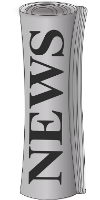 The service searches about 23 different behavioral neuroscience websites and pulls the top matches for the behavioral neuroscience keywords, set up in agreement with the IBNS Membership and Communications Committee. It gives a quick glimpse of the daily news and easy links to read the rest of the articles you find interesting. Members must subscribe to the paper in order to receive it daily, and can unsubscribe at any time. As a benefit to IBNS members, there is no cost! The service searches about 23 different behavioral neuroscience websites and pulls the top matches for the behavioral neuroscience keywords, set up in agreement with the IBNS Membership and Communications Committee. It gives a quick glimpse of the daily news and easy links to read the rest of the articles you find interesting. Members must subscribe to the paper in order to receive it daily, and can unsubscribe at any time. As a benefit to IBNS members, there is no cost!
The link to the newsletter also goes out on Twitter automatically each day.
This is a great application that simplifies staying up-to-date of imminent neuroscience findings without having to browse multiple websites to do so.
Do not miss any more neuroscience news! Subscribe to the email newsletter!
Registration Discounts Offered for the 2018 Annual Meeting
Register for the upcoming 2018 IBNS Annual Meeting before March 15 to take advantage of early registration discounts!
Join IBNS and receive even more discounts!
But wait! Wouldn't you like to save additional discounts on registration fees?
IBNS attendees can receive additional discounts on registration by helping get the word out!
Simply download an IBNS flyer and share it!
Here’s How: print one of our meeting flyers and post it to your department's bulletin board. Then, take a picture of yourself next to the posted flyer and send it to [email protected]. We will send you a discount code for $10 off your registration fee -- the registration form will have the option of applying your discount code on the payment page.
Don't forget to also share your photo on Facebook, Twitter, and/or Instagram. Be sure to tag us and use the hashtags #IBNSConnect and #IBNS2018.
Remember to "like" and follow IBNS on Facebook, Twitter, and Instagram.
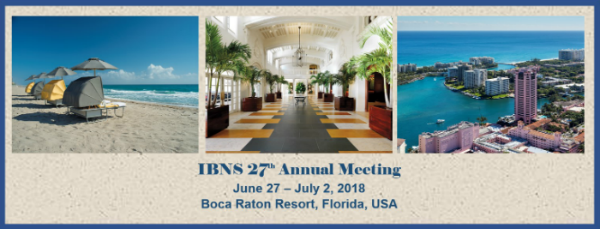
Other Meeting Announcements
Parental Brain 2018 - Biological and Behavioral Perspectives in Parental Health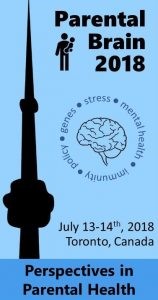
When: July 13-14, 2018
Where: Westin Harbour Castle Hotel, Toronto, Canada
What: International meeting of experts in the study of parenting, the parental brain and broad issues of parental, physical, and psychological health.
Symposia, keynote lectures, panel discussions, and trainee poster presentations. More details to come at http://parentalbrain2018.com/.
Meeting will be held as a satellite to the Joint International Congress of Neuroendocrinology (ICN) -- Society for Behavioral Neuroendocrinology (SBN) meeting (http://www.icn2018.org/).
Registration will be through the International Congress of Neuroendocrinology (ICN) website.
British Association for Psychopharmacology (BAP)
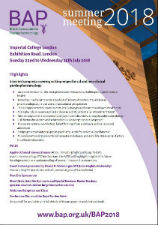
When: July 22-25, 2018
Where: Imperial College, London, UK
What: BAP promotes research and education in psychopharmacology and related areas, and brings people together in academia, health services, and industry. Formed in 1974, it is the largest such national association in Europe, and the second largest in the world.
For more details, please visit http://www.bap.org.uk/BAP2018.
American Psychological Association (APA) Division 6: Society for Behavioral Neuroscience and Comparative Psychology (SBNCP)
When: August 9-12, 2018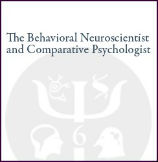
Where: San Francisco, California, USA
What: One of the most important functions of SBNCP is to acknowledge individuals who have made significant contributions to the advancement of our field through their scholarship and service.
SBNCP calls for nominations for awards to be given at the 2018 annual meeting of the American Psychological Association. Information on these awards can be found at http://www.apadivisions.org/division-6/awards/index.aspx.
The deadline for nominations will be Fridays, January 12, 2018. Each nomination should consist of the candidate's CV and a letter detailing the basis for the nomination.
Nominations should be submitted electronically to George F. Michel at [email protected], Chair, 2017 Awards Committee.
Do you have an interesting hobby or member news to share?
Let us know at [email protected]
|